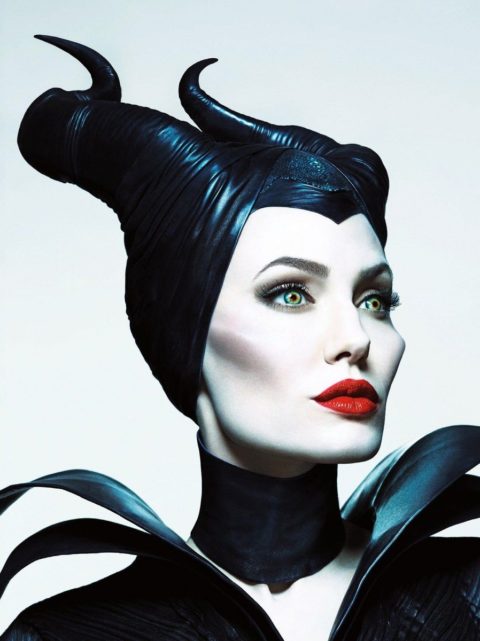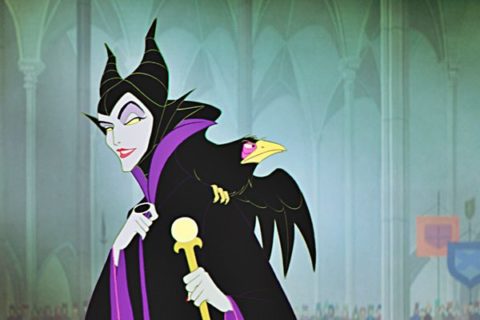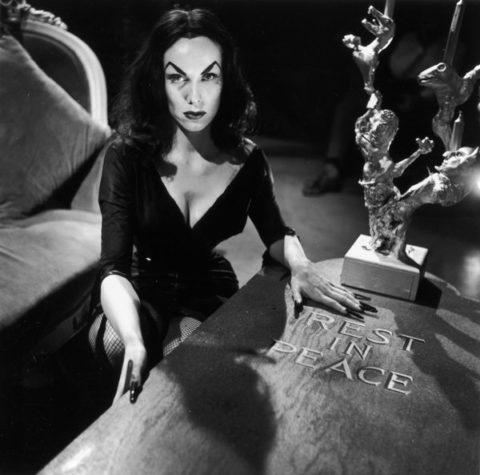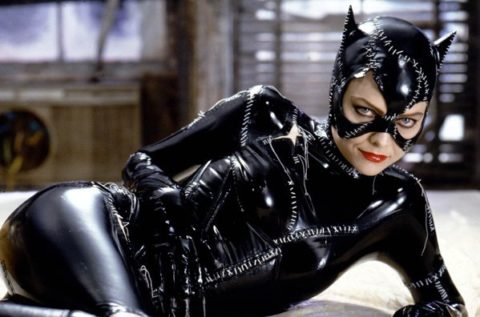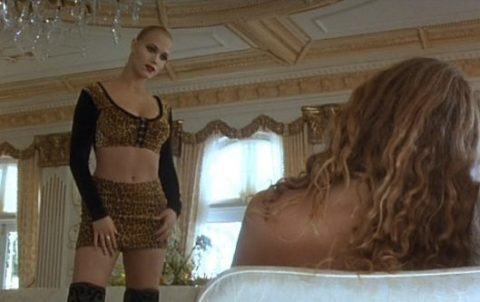Pretty hurts: How Hollywood shaped the way we see evil beauty today


Evil beauty from the beginning »
Beauty, at Walt Disney Studios, is in the eye of the animator. Disney films have always conflated natural beauty with inherent goodness, unnatural beauty as inherent wickedness, giving their princesses and heroines the eyes, hair, lips, and skins female villains would kill for.
Sleeping Beauty, Disney’s 1959 masterpiece, is the best example of this dynamic: born with all the markers of ‘natural’ beauty, Aurora is both a good person and good to look at. She’s blonde, thin, graceful and beloved by animals, fairies and humans. She’s also almost entirely silent—in Ariane Lange’s piece on the history of pre-Disney Sleeping Beauty incarnations, she counts only 263 words spoken by our titular beauty, not counting lyrics she sings or the noises she makes in response to other characters. The action starts for Aurora when a single drop of blood appears on her sixteenth birthday, rendering her unconscious until a man comes to legitimize her existence with his mouth.
Our villain, Maleficent, is Disney’s greatest hot bitch in charge. In sharp contrast to Aurora, Maleficent is funny, a woman who speaks often and with great force, so bad and so beautiful all at once.
Today, Disney will release their live-action version of the Sleeping Beauty fable starring and executive produced by Angelina Jolie. The film promises to show us the real story behind Sleeping Beauty’s alleged villain.
Jolie was born to play this part, as the cliché goes, the culmination of the goth queen persona she’s been artfully crafting since the beginning of her career. (Her long black hair, liquid eyeliner, and floor-length Morticia Addams gown when she won her 1999 Oscar for Girl, Interrupted is burned into our collective consciousness.) In Maleficent, Hollywood makeup artist Rick Baker crafted silicon cheekbone prosthetics to give Jolie that sharp look of the cartoon inspiration, but they only add to that ethereal beauty that Jolie already has. She’s always been too beautiful to play a girl next door. She was meant to play assassins, femme fatales, women who could never be, as the tabloids say, just like us. Her humanitarian work aligns her, historically, with Audrey Hepburn, but her face aligns her with Theda Bara, the original vamp sex object.
Angelina Jolie’s perceived personality has always been a reflection of her perceived face. Despite the fact that she and Brad Pitt have been together for almost ten years, she’ll always be pitted against Jennifer Aniston in the tabloids, each one characters in outmoded gender stereotypes attempting to align women into camps, Team Aniston or Team Jolie, golden girls vs. goth queens.
For more on the construction of celebrity identity, read Anne Helen Peterson’s Scandals of Classic Hollywood, but here’s one passage from her essay on Theda Bara that seems particularly relevant. Peterson quotes Bara as saying, “You say I have the most wicked face of any woman. You say my hair is like the serpent locks of Medusa, that my eyes have the cruel cunning of Borgia, that my mouth is the mouth of the sinister scheming Delilah, that my hands are like the talons of a Circe or the blood-bathing Elizabeth Bathory. And then you ask me of my soul—you wish to know if it is reflected in my face.”
Sleeping Beauty is perhaps the most flawed representations of women in the entire Disney canon—and that’s saying something, since almost all the films have some terrible gender politics—as the film that most values silence in its leading lady, that prizes sexual interactions where the woman is unconscious.
Maleficent, wisely, attempts to undo the damage Sleeping Beauty caused by giving Jolie’s Maleficent a thinly veiled rape revenge narrative, driving her to seek revenge by any means necessary. She puts away her long hair, wrapped up in those infamous horns (created here by milliner Justin Smith, alternately wrapped in python or leather for protection and fiercely beautiful texture), long velvet robes draped over her body, sweeping through both kingdoms like a black cloud.
This is the look we’ve come to expect from our wronged women. Angelina Jolie’s transformation from sweet fairy to evil queen is reminiscent of Michelle Pfeiffer’s Catwoman in Batman Returns, sewing her catsuit as protective armor, a foil for Batman while seeking revenge on men who mistreat women, hiding her face behind slick leather. Maleficent is also indebted to the film canon that BAM recently paid homage to with their female vengeance series—for more on that, click here—such as Abel Fererra’s Ms. 45, a silent woman who paints her mouth red and lets her gun do her talking. There’s Showgirls’ Nomi Malone, painting her lips and nipples red before violently avenging the rape of her best friend. If we look for historical context, Maleficent has roots in Elizabeth Bathory, the foremother of evil women driven to blood for beauty.
Rumors persisted that the original Maleficent was modeled after Vampira, another witchy goth queen whose influence on pop culture is still felt today; The Walt Disney Archives only recently confirmed that she was hired to provide inspiration for Maleficent’s animators. Like Theda Bara, she embodied a vampiric sexuality in her entire life, not just on her late night television show. Her identity was infused with a wink and satire of contemporary culture, but her face and body were purely of her own design, all dramatic corsets and deathly pale skin. It’s a little-known fact about Maleficent that feels fitting—a full circle, beginning with one dangerous beauty and ending with another.
In a Disney film, a character like Maleficent could never be simply, hilariously, gorgeously, chillingly evil—she needs to be our flawed champion, someone whose ultimate battle is not between another women, motivated by something as petty as looks. Maleficent has to learn a valuable lesson, sure, but she still gets her shot at revenge, which is more than we can say for any other Disney character, hero or villain. Here, Angelina Jolie gets to be almost everything—witch, wife, mother, lover, bloodsucker, queen, not entirely bad and not entirely good. For beautiful women, bad women, and real women, that’s the only way to live a story.

